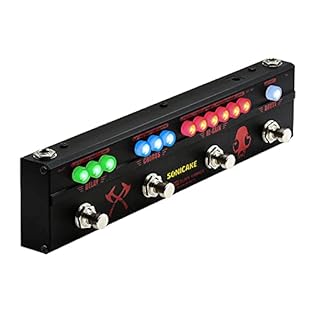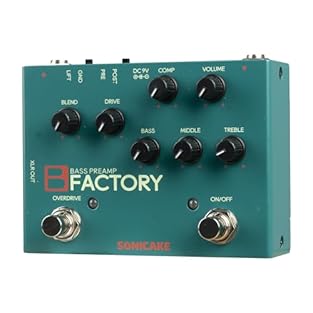Tasty Pedals made by Vongon
Vongon design innovative, beautifully built pedals and instruments that blend vintage inspiration with modern digital creativity. Their effects focus on lush textures, dreamy modulation, and expressive sound shaping, often with a unique interface that encourages experimentation. With a distinctive aesthetic and a warm, musical character, Vongon pedals appeal to players who want atmospheric tones and a more exploratory approach to guitar effects.
Just Pedal Ingredients.
and. Guitar Pedals. New. Pedal — Your pedal is like a signature dish for your sound — a flavour-packed creation that transforms the bland ingredients of your guitar into something unforgettable. Each one adds its own seasoning, texture, and heat, turning a simple meal into a feast of tone.
These tasty little boxes sit in a row, like plates on a buffet, letting you mix and match flavours as you play. With one tap of your foot, you can swap sweet for spicy, subtle for smoky, and serve up something completely new. From the comfort food of warm overdrive to the fiery kick of fuzz, from smooth jazz sauce to heavy-metal spice, pedals give players a full menu of options to express their taste. And just like with food — once you’ve tried one dish, you’ll want to sample them all.
Collecting, trading, and discovering new flavours soon becomes part of the joy of being a tone-loving gourmet geek with a guitar.. Pitch — Pitch pedals alter the frequency of your guitar signal, changing the perceived note or adding harmony. They can shift notes up or down by fixed intervals, create harmonies, or produce dive-bomb and whammy-style effects without a tremolo arm. Pitch shifters and harmonisers are great for thickening solos, simulating multiple guitars, or experimenting with creative, otherworldly sounds that expand your tonal range.. Reverb — A reverb pedal is like the rich sauce that ties every flavour on the plate into one smooth experience. It adds depth, warmth, and atmosphere — the sonic equivalent of a perfectly reduced glaze that lingers on the tongue. Whether you’re after the subtle ambience of a cosy café (spring or plate reverb) or the grand echoes of a cathedral (hall or shimmer reverb), this is where your tone breathes and expands. A touch of reverb can turn a dry sound into something lush and inviting — but pour on too much, and it’s all you can taste. Used with finesse, it’s the finishing touch that transforms your tone from plain to unforgettable.. Stereo — A stereo pedal or setup splits your guitar signal into two separate outputs, allowing you to create a wide, spacious sound when run into two amps or channels. Effects like chorus, delay, and reverb sound especially lush in stereo, as the modulation or repeats can bounce between left and right channels for a three-dimensional feel. It’s a popular choice for players who want to fill a room or studio mix with depth and movement that a single amp simply can’t produce.
Using stereo pedals opens up creative options for layering tones and building immersive soundscapes. You can pan effects across the stereo field, send clean and effected signals to different amps, or combine analogue and digital textures for a rich, dynamic sound. Whether you’re crafting ambient washes or creating a massive live presence, a stereo setup delivers clarity, separation, and a sense of space that transforms your overall tone.. Ultrasheer. Vibrato — Vibrato is an effect commonly used in music, particularly in guitar playing, that involves modulating the pitch of a note to create a wavering or trembling sound. It adds a dynamic and expressive quality to the music, enhancing the richness and depth of individual notes or chords. Here’s how vibrato works and some common features of vibrato effects:
1. **Pitch Modulation**: Vibrato effect pedals modulate the pitch of the guitar signal, causing it to oscillate above and below the original pitch at a controlled rate and depth. This creates a shimmering or undulating effect similar to the natural vibrato produced by a vocalist or instrumentalist.
2. **Controls**: Vibrato pedals typically offer controls for adjusting the rate (speed) and depth (intensity) of the pitch modulation. The rate control determines how quickly the pitch oscillates, while the depth control determines the extent of the pitch modulation.
3. **Waveform Options**: Some vibrato pedals provide options for selecting different waveform shapes, such as sine wave, triangle wave, or square wave. Each waveform shape produces a different character of vibrato, ranging from smooth and subtle to choppy and pronounced.
4. **Expression Pedal Compatibility**: Many vibrato pedals are compatible with expression pedals, allowing players to control the rate or depth of the vibrato effect in real-time using their foot. This adds a dynamic and expressive element to the performance, allowing for greater control over the vibrato effect.
5. **True Bypass**: Like many other effects pedals, vibrato pedals may feature true bypass circuitry to ensure that the pedal does not color or degrade the guitar signal when it’s not in use. True bypass preserves the tone and integrity of the instrument’s sound when the pedal is bypassed.
6. **Blend Control**: Some vibrato pedals include a blend control that allows players to mix the wet (effected) and dry (unaffected) signals. This enables subtle blending of the vibrato effect with the original guitar signal, preserving clarity and definition while adding depth and texture.
7. **Vintage vs. Modern Voicing**: Vibrato pedals may offer different voicing options to emulate the characteristics of vintage vibrato effects or provide more modern and versatile tones. Vintage-style vibrato pedals often replicate the sound of classic amplifier vibrato circuits, while modern pedals may offer enhanced features and flexibility.
Overall, vibrato pedals are versatile tools for adding movement, texture, and expression to guitar tones. Whether used subtly to add warmth and depth to clean passages or dialed in for dramatic pitch modulation effects, vibrato pedals offer guitarists a wide range of creative possibilities for shaping their sound..

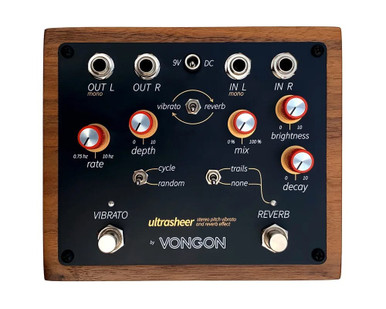

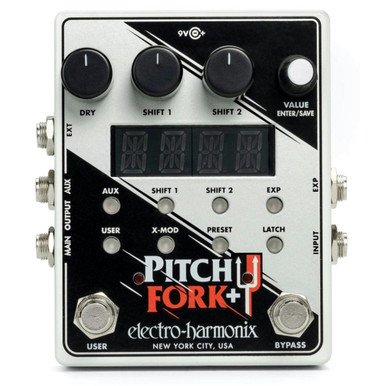
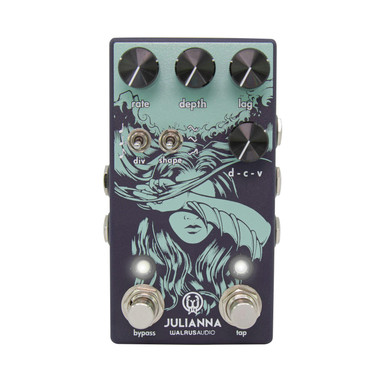
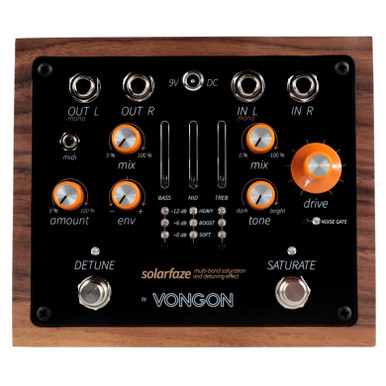

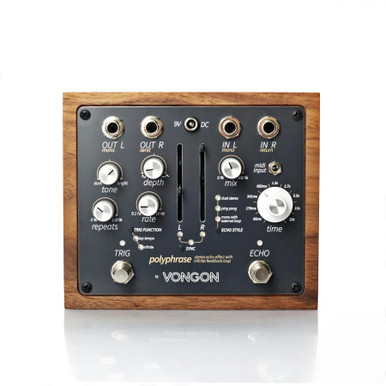
![[3x3 Modes for Versatile Effects]: >> 3 delay modes (Echo, Digital, Vintage) and 3 reverb modes (Hall, Room, Plate) provide 9 unique effect combinations. The DSP restores 6 classic dual-time-domain spatial effects for precise sound control [User-Defi...](https://m.media-amazon.com/images/I/41UTXSm8WjL._SL313_.jpg)
